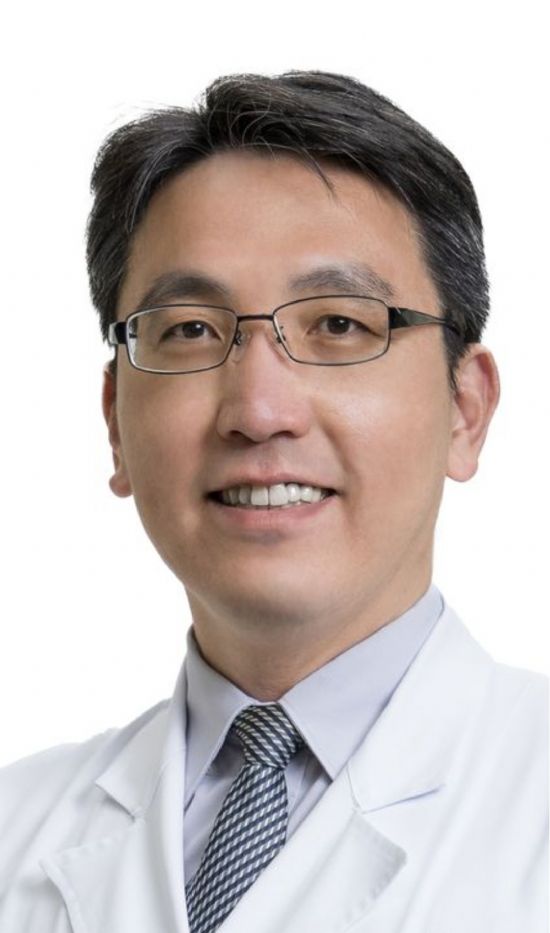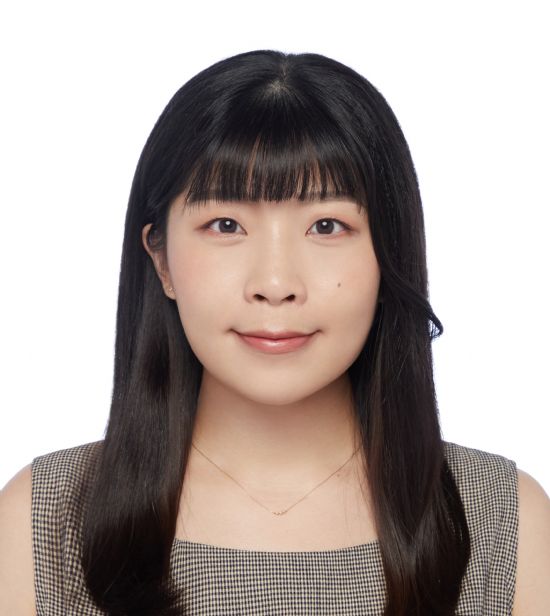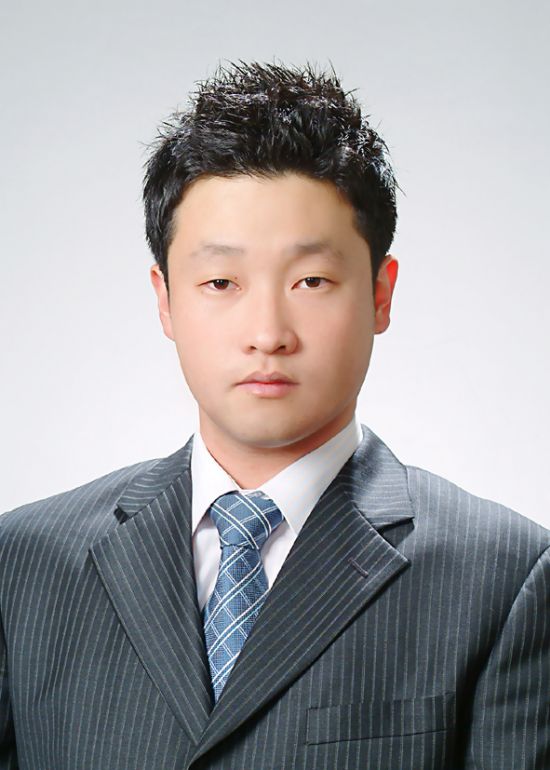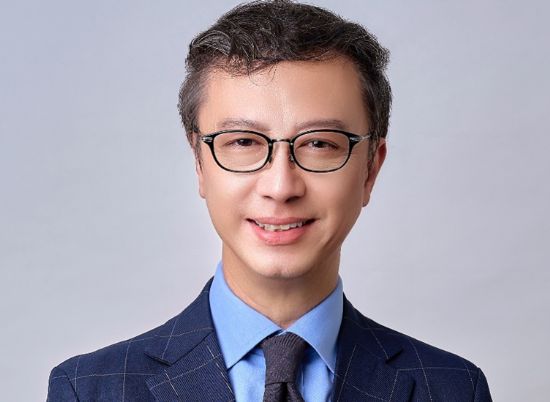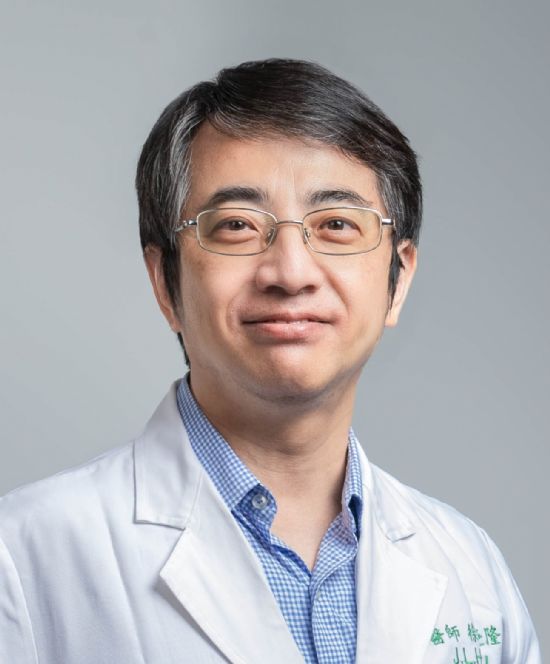Time slot's time in Taipei (GMT+8)
2025/11/21 14:00-17:30 Room 201 DEF
- Kick-on Seminar VIII
Neuromodulation: The mechanism work behind the promising clinical practice
- Time
- Topic
- Speaker
- Moderator
- 14:00-14:30
- Neuromodulation: basic concept and clinical facilities set up
- Speaker:
Kuan-Lin Lai
- Moderator:
Jie-Yuan Li
- Kuan-Lin Lai
- MD, PhD.
-
Attending Physician, Taipei Veterans General Hospital
Assistant Professor, National Yang Ming Chiao Tung University
E-mail:laikuanlin@gmail.com
Executive Summary:
Dr. Kuan-Lin Lai graduated from National Yang-Ming University in Taipei, Taiwan, in 2002, and completed his neurology residency at Taipei Veterans General Hospital. Since 2006, he has served as an attending physician and neurological consultant. From 2021 to 2023, Dr. Lai held the position of Section Director for the Peripheral Nervous System at the Taiwan Neurological Society.
Dr. Lai’s research focuses on the electrophysiology and pathophysiology of headache disorders, particularly migraine. He has employed a range of electrophysiological techniques to investigate migraine mechanisms, including high-frequency oscillations (HFOs) in sensory evoked potentials, EEG complexity analysis, and structural and functional MRI to assess anatomical changes and connectivity alterations. Additionally, he has explored the therapeutic potential of repetitive transcranial magnetic stimulation (rTMS) in various neurological conditions, such as migraine, stroke, and parkinsonism.
Dr. Kuan-Lin Lai graduated from National Yang-Ming University in Taipei, Taiwan, in 2002, and completed his neurology residency at Taipei Veterans General Hospital. Since 2006, he has served as an attending physician and neurological consultant. From 2021 to 2023, Dr. Lai held the position of Section Director for the Peripheral Nervous System at the Taiwan Neurological Society.
Dr. Lai’s research focuses on the electrophysiology and pathophysiology of headache disorders, particularly migraine. He has employed a range of electrophysiological techniques to investigate migraine mechanisms, including high-frequency oscillations (HFOs) in sensory evoked potentials, EEG complexity analysis, and structural and functional MRI to assess anatomical changes and connectivity alterations. Additionally, he has explored the therapeutic potential of repetitive transcranial magnetic stimulation (rTMS) in various neurological conditions, such as migraine, stroke, and parkinsonism.
Lecture Abstract:
Neuromodulation techniques have seen significant advancements in recent years. While traditionally reliant on invasive methods, an increasing number of non-invasive options are now available for clinicians and researchers to choose from, including repetitive transcranial magnetic stimulation (rTMS), transcranial electric stimulation (TES), and non-invasive vagus nerve stimulation (nVNS), among others.
This lecture will introduce commonly used neuromodulation techniques, explain their underlying physiological mechanisms, discuss approved and potentially effective clinical applications, and explore how to establish an appropriate therapeutic setting.
Neuromodulation techniques have seen significant advancements in recent years. While traditionally reliant on invasive methods, an increasing number of non-invasive options are now available for clinicians and researchers to choose from, including repetitive transcranial magnetic stimulation (rTMS), transcranial electric stimulation (TES), and non-invasive vagus nerve stimulation (nVNS), among others.
This lecture will introduce commonly used neuromodulation techniques, explain their underlying physiological mechanisms, discuss approved and potentially effective clinical applications, and explore how to establish an appropriate therapeutic setting.
- Time
- Topic
- Speaker
- Moderator
- 14:30-15:00
- What is said in patients with migraine by neuromodulation?
- Speaker:
Yu Aoh
- Moderator:
Wei-Ta Chen
- Yu Aoh
- MD
-
Attending physician, Division of Parkinsons' disease and movement disorders, Department of Neurology, China Medical University Hospital, Taichung, Taiwan
PhD program, Graduate Insitute of Biomedical Sciences, College of Medicine, China Medical University, Taichung, Taiwan
E-mail:aohyu@hotmail.com
Executive Summary:
Dr. Yu Aoh completed her neurology training in China Medical University Hospital and became an attending physician in the department of Neurology in China Medical Univerisity hospital. She has a keen interest in treating patients with movement disorders as well as headache disorders, and she is an active member in both Taiwan Movemen Disorder Society and Taiwan Headache Society. Dr. Aoh is presently under PHD program at graduate institute of China Medical University, focusing on high frequency focused ultrasound treatment, non-motor symptoms and especially pain in PD.
Dr. Yu Aoh completed her neurology training in China Medical University Hospital and became an attending physician in the department of Neurology in China Medical Univerisity hospital. She has a keen interest in treating patients with movement disorders as well as headache disorders, and she is an active member in both Taiwan Movemen Disorder Society and Taiwan Headache Society. Dr. Aoh is presently under PHD program at graduate institute of China Medical University, focusing on high frequency focused ultrasound treatment, non-motor symptoms and especially pain in PD.
Lecture Abstract:
Migraine is a common neurological disease affecting nearly ten percent of the population worldwide, carrying huge burden to the patient, their families and health care systems. In recent few years, novel treatments for both acute and preventive treatment of migraine had been thriving, including the CGRP(calcitonin gene-related peptide)-targeting therapies, botulinum toxin injection and the news-breaking PACAP-38(pituitary adenylate cyclase-activating polypeptide-38) targeting therapy. However, we can still see tremendous unmet needs in the treatment of migraine. Therefore, non-invasive neuromodulatory treatments such as rTMS, tDCS, trigeminal nerve and vagus nerve stimulation could open a new era. In this lecture, I will try my best to review the current evidence of neuromodulatory treatment in migraine.
Migraine is a common neurological disease affecting nearly ten percent of the population worldwide, carrying huge burden to the patient, their families and health care systems. In recent few years, novel treatments for both acute and preventive treatment of migraine had been thriving, including the CGRP(calcitonin gene-related peptide)-targeting therapies, botulinum toxin injection and the news-breaking PACAP-38(pituitary adenylate cyclase-activating polypeptide-38) targeting therapy. However, we can still see tremendous unmet needs in the treatment of migraine. Therefore, non-invasive neuromodulatory treatments such as rTMS, tDCS, trigeminal nerve and vagus nerve stimulation could open a new era. In this lecture, I will try my best to review the current evidence of neuromodulatory treatment in migraine.
- Time
- Topic
- Speaker
- Moderator
- 15:00-15:30
- Clinical application of rTMS in drug-resistant epilepsy: exploring network dynamics and therapeutic implications
- Speaker:
Jung Bin Kim
- Moderator:
Liang-Po Hsieh
- Jung Bin Kim
- MD, PhD
-
Associate Professor, Department of Neurology, Korea University Anam Hospital, Korea University College of Medicine
Director, AI R&D Center, Korea University Anam Hospital
E-mail:kjbin80@korea.ac.kr
Executive Summary:
Dr. Jung Bin Kim is an Associate Professor of Neurology at Korea University Anam Hospital, where he also serves as Vice Dean for Research, Director of the AI R&D Center, and Deputy Director of the Smart Healthcare Research Division. He received his M.D., M.S., and Ph.D. in neuroscience from Korea University and completed his neurology residency at the same institution.
Dr. Kim is a board-certified neurologist and clinical neurophysiologist, with additional certifications in EEG, evoked potentials, and electromyography. He currently serves as Secretary General of the Korean Society of Clinical Neurophysiology and Scientific Director of the Korean Society for Brain Neuromodulation.
His research focuses on functional brain network analysis, epilepsy, sleep disorders, and non-invasive neuromodulation techniques such as repetitive transcranial magnetic stimulation (rTMS). He has led national projects on individualized rTMS therapy for drug-resistant epilepsy and EEG-based seizure prediction systems. He has also developed wearable systems for autonomic and cognitive monitoring, holding multiple patents with successful technology transfers.
Dr. Kim has authored over 70 peer-reviewed articles in leading journals including Neurology, Epilepsia, Scientific Reports, and NeuroImage. He is an editorial board member of the Journal of Clinical Neurology and Frontiers in Neurology (Epilepsy section). His work integrates AI and neurophysiology to advance precision diagnostics and therapeutic strategies in epilepsy, Parkinson’s disease, and neurodegenerative disorders.
Dr. Jung Bin Kim is an Associate Professor of Neurology at Korea University Anam Hospital, where he also serves as Vice Dean for Research, Director of the AI R&D Center, and Deputy Director of the Smart Healthcare Research Division. He received his M.D., M.S., and Ph.D. in neuroscience from Korea University and completed his neurology residency at the same institution.
Dr. Kim is a board-certified neurologist and clinical neurophysiologist, with additional certifications in EEG, evoked potentials, and electromyography. He currently serves as Secretary General of the Korean Society of Clinical Neurophysiology and Scientific Director of the Korean Society for Brain Neuromodulation.
His research focuses on functional brain network analysis, epilepsy, sleep disorders, and non-invasive neuromodulation techniques such as repetitive transcranial magnetic stimulation (rTMS). He has led national projects on individualized rTMS therapy for drug-resistant epilepsy and EEG-based seizure prediction systems. He has also developed wearable systems for autonomic and cognitive monitoring, holding multiple patents with successful technology transfers.
Dr. Kim has authored over 70 peer-reviewed articles in leading journals including Neurology, Epilepsia, Scientific Reports, and NeuroImage. He is an editorial board member of the Journal of Clinical Neurology and Frontiers in Neurology (Epilepsy section). His work integrates AI and neurophysiology to advance precision diagnostics and therapeutic strategies in epilepsy, Parkinson’s disease, and neurodegenerative disorders.
Lecture Abstract:
Approximately one-third of people with epilepsy have drug-resistant epilepsy (DRE), highlighting an urgent need for novel therapies. Low-frequency repetitive transcranial magnetic stimulation (rTMS) is a promising neuromodulation strategy that has shown modest seizure reduction in early studies. We conducted a randomized, single-blind, crossover trial in 20 patients with DRE (10 with mesial temporal lobe epilepsy [MTLE] and 10 with focal cortical dysplasia [FCD]) comparing 5-day courses of 0.5 Hz rTMS at 1,000 versus 3,000 pulses per day. rTMS led to a significant reduction in monthly seizure frequency, with average reductions ranging from 30% to 40% across stimulation doses and epilepsy subtypes, and improved quality of life, with responders observed in both dose groups and both epilepsy subtypes. Electroencephalography network analysis showed that therapeutic effects were accompanied by suppression of pathological theta-band synchrony and reconfiguration of high-frequency (beta–gamma) connectivity. Distinct network modulation patterns emerged: MTLE exhibited broad-band connectivity suppression (particularly at low frequencies), whereas FCD showed selective increases in beta/gamma connectivity. The magnitude of network changes correlated with the degree of seizure reduction. Using baseline EEG features, machine learning models accurately predicted treatment responders and the optimal stimulation dose for each patient (AUC > 0.90). These findings highlight network-level mechanisms of rTMS in DRE and support a personalized, data-driven approach to neuromodulation therapy.
Approximately one-third of people with epilepsy have drug-resistant epilepsy (DRE), highlighting an urgent need for novel therapies. Low-frequency repetitive transcranial magnetic stimulation (rTMS) is a promising neuromodulation strategy that has shown modest seizure reduction in early studies. We conducted a randomized, single-blind, crossover trial in 20 patients with DRE (10 with mesial temporal lobe epilepsy [MTLE] and 10 with focal cortical dysplasia [FCD]) comparing 5-day courses of 0.5 Hz rTMS at 1,000 versus 3,000 pulses per day. rTMS led to a significant reduction in monthly seizure frequency, with average reductions ranging from 30% to 40% across stimulation doses and epilepsy subtypes, and improved quality of life, with responders observed in both dose groups and both epilepsy subtypes. Electroencephalography network analysis showed that therapeutic effects were accompanied by suppression of pathological theta-band synchrony and reconfiguration of high-frequency (beta–gamma) connectivity. Distinct network modulation patterns emerged: MTLE exhibited broad-band connectivity suppression (particularly at low frequencies), whereas FCD showed selective increases in beta/gamma connectivity. The magnitude of network changes correlated with the degree of seizure reduction. Using baseline EEG features, machine learning models accurately predicted treatment responders and the optimal stimulation dose for each patient (AUC > 0.90). These findings highlight network-level mechanisms of rTMS in DRE and support a personalized, data-driven approach to neuromodulation therapy.
- Time
- Topic
- Speaker
- Moderator
- 16:00-16:30
- Role of TMS in the management of cervical spondylosis myelopathy
- Speaker:
Yew Long Lo
- Moderator:
Ming-Kuei Lu
- Yew Long Lo
- MD
-
Senior Consultant Neurologist, National Neuroscience Institute, Singapore General Hospital
E-mail:lo.yew.long@singhealth.com.sg
Executive Summary:
Professor Lo graduated from the National University of Singapore and joined the Department of Neurology, Singapore General Hospital in 1994. He completed his postgraduate fellowship in Clinical Neurophysiology at the University of Oxford in 1998. He has been a fellow of the Academy of Medicine, Singapore, since 1999. He was previously Head and currently Deputy Chief Executive Officer and Senior Consultant Neurologist at the National Neuroscience Institute (SGH Campus) and Professor, Duke-NUS Medical School, Adjunct Professor, Lee Kong Chian School of Medicine and Adjunct Professor, Faculty of Medicine, National University of Singapore. Prof Lo served as the Chairman of the Centralised Institutional Review Board, and is currently Group Director of Research Integrity, Compliance and Ethics at SingHealth.
Professor Lo is active in the field of Clinical Neurophysiology and lectures regularly on this subject in the USA, Europe, Australasia and Asian countries. . He was the founder president of the Clinical Neurophysiology Society (Singapore) and representative to the International Federation of Clinical Neurophysiology. He was an invited speaker in the World and Asian Oceanian Congresses of Neurology, as well as the European and International Congress of Clinical Neurophysiology. He is the current President of the Asian-Oceanian Society of Intraoperative Neurophysiology (AOSIN). In 2007, he was the awarded the Galloway Lectureship for his work in cervical myelopathy. He delivered the 31st Seah Cheng Siang Memorial Lecture in 2022 on intraoperative monitoring of surgical procedures. He received the Public Administration Medal at the National Day Awards in 2024.
His main research interests are on spinal cord disorders, where he has held 3 National Medical Research Grants. He is principal investigator of projects addressing the functional neurophysiology of cord compression, mechanisms of cervical whiplash and cortical plasticity changes in spinal cord dysfunction. Other ongoing international research collaborations include transcranial magnetic stimulation in motor control, neuromuscular transmission in demyelinating neuropathies and imaging correlates of cortical and cerebellar activity.
Professor Lo is Associate Editor of Clinical Neurophysiology journal, serves on the current editorial board of Clinical Neurology and Neurosurgery and is a regular reviewer of over 30 international journals. He is past Editor-in-Chief of the Proceedings of Singapore Healthcare. He has over 200 publications in international peer reviewed journals, including first author papers in the New England Journal of Medicine, Neurology, The Lancet Neurology, Annals of Neurology, Brain, JAMA Neurology, Journal of Neurology, Spine, Journal of Neurology, Neurosurgery and Psychiatry, Nature Clinical Reviews Neurology, Journal of Medical Virology and Movement Disorders.
His book titled “Clinical Neurophysiology: New Clinical and Research Applications” is published in 2013.
Professor Lo graduated from the National University of Singapore and joined the Department of Neurology, Singapore General Hospital in 1994. He completed his postgraduate fellowship in Clinical Neurophysiology at the University of Oxford in 1998. He has been a fellow of the Academy of Medicine, Singapore, since 1999. He was previously Head and currently Deputy Chief Executive Officer and Senior Consultant Neurologist at the National Neuroscience Institute (SGH Campus) and Professor, Duke-NUS Medical School, Adjunct Professor, Lee Kong Chian School of Medicine and Adjunct Professor, Faculty of Medicine, National University of Singapore. Prof Lo served as the Chairman of the Centralised Institutional Review Board, and is currently Group Director of Research Integrity, Compliance and Ethics at SingHealth.
Professor Lo is active in the field of Clinical Neurophysiology and lectures regularly on this subject in the USA, Europe, Australasia and Asian countries. . He was the founder president of the Clinical Neurophysiology Society (Singapore) and representative to the International Federation of Clinical Neurophysiology. He was an invited speaker in the World and Asian Oceanian Congresses of Neurology, as well as the European and International Congress of Clinical Neurophysiology. He is the current President of the Asian-Oceanian Society of Intraoperative Neurophysiology (AOSIN). In 2007, he was the awarded the Galloway Lectureship for his work in cervical myelopathy. He delivered the 31st Seah Cheng Siang Memorial Lecture in 2022 on intraoperative monitoring of surgical procedures. He received the Public Administration Medal at the National Day Awards in 2024.
His main research interests are on spinal cord disorders, where he has held 3 National Medical Research Grants. He is principal investigator of projects addressing the functional neurophysiology of cord compression, mechanisms of cervical whiplash and cortical plasticity changes in spinal cord dysfunction. Other ongoing international research collaborations include transcranial magnetic stimulation in motor control, neuromuscular transmission in demyelinating neuropathies and imaging correlates of cortical and cerebellar activity.
Professor Lo is Associate Editor of Clinical Neurophysiology journal, serves on the current editorial board of Clinical Neurology and Neurosurgery and is a regular reviewer of over 30 international journals. He is past Editor-in-Chief of the Proceedings of Singapore Healthcare. He has over 200 publications in international peer reviewed journals, including first author papers in the New England Journal of Medicine, Neurology, The Lancet Neurology, Annals of Neurology, Brain, JAMA Neurology, Journal of Neurology, Spine, Journal of Neurology, Neurosurgery and Psychiatry, Nature Clinical Reviews Neurology, Journal of Medical Virology and Movement Disorders.
His book titled “Clinical Neurophysiology: New Clinical and Research Applications” is published in 2013.
Lecture Abstract:
Role of Transcranial Magnetic Stimulation in the Management of Cervical Spondylotic Myelopathy
Cervical spondylotic myelopathy (CSM) is a chronic progressive impingement of the spinal cord by osteocartilaginous elements, potentially leading to sensorimotor limb deficits, gait instability, bladder and bowel dysfunction. Severe cases of CSM may be managed surgically, with the aim of preventing further neurological deterioration or achieving some functional recovery.
Transcranial magnetic stimulation (TMS) derived central motor conduction time (CMCT) remains the most robust and commonly utilized parameter for evaluating cord compression (Lo, 2007; 2008; Funaba et al, 2015). CMCT may be abnormal even in the absence of pyramidal signs (Lanza et al, 2020), and is particularly sensitive when motor evoked potential (MEP)s were obtained from the abductor policies brevis (APB) muscle (Shibuya et al, 2014; Imajo et al, 2018), and incorporating CMCT from the adductor hallucis (AH) and MEP amplitudes (Lo et al, 2007)(Lo YL et al, 2006)(Lo YL et al, 2004)(Funaba et al, 2015). The prolongation in CMCT has also been correlated with the ratio of flattening and anteroposterior diameter parameters visualized with MRI (Rikita et al, 2017) and kinematic CT myelography (Funaba et al, 2021), as well as long-term functional outcome after cervical spine decompression (Takahashi et al, 2008; Mazur et al, 2014; Nakanishi et al, 2014; Deftereos et al, 2015). TMS has limited sensitivity in differentiating cervical from thoracic myelopathy (Kamei et al, 2024).
CSM exhibits similar features as chronic progressive spinal cord injury (SCI) and may share similar TMS findings. Specifically, motor cortex mapping with TMS showed dynamic changes after CSM surgery (Green et al, 2015) (Boaro et al, 2024) (Bhagavatula et al, 2016) and spinal cord injury (Tazoe & Perez, 2021). The findings pertaining to cortical silent period (CSP) duration have been more variable, and include an increase (Barry et al, 2013), reduction (Shimizu et al, 2000) or remain unchanged (Nardone et al, 2013b).
There is preliminary data suggesting that use of TMS paired with peripheral nerve stimulation (Hang et al, 2020) and repetitive TMS with physiotherapy (Farrokhi et al, 2024) may facilitate motor recovery in spinal cord injury.
Role of Transcranial Magnetic Stimulation in the Management of Cervical Spondylotic Myelopathy
Cervical spondylotic myelopathy (CSM) is a chronic progressive impingement of the spinal cord by osteocartilaginous elements, potentially leading to sensorimotor limb deficits, gait instability, bladder and bowel dysfunction. Severe cases of CSM may be managed surgically, with the aim of preventing further neurological deterioration or achieving some functional recovery.
Transcranial magnetic stimulation (TMS) derived central motor conduction time (CMCT) remains the most robust and commonly utilized parameter for evaluating cord compression (Lo, 2007; 2008; Funaba et al, 2015). CMCT may be abnormal even in the absence of pyramidal signs (Lanza et al, 2020), and is particularly sensitive when motor evoked potential (MEP)s were obtained from the abductor policies brevis (APB) muscle (Shibuya et al, 2014; Imajo et al, 2018), and incorporating CMCT from the adductor hallucis (AH) and MEP amplitudes (Lo et al, 2007)(Lo YL et al, 2006)(Lo YL et al, 2004)(Funaba et al, 2015). The prolongation in CMCT has also been correlated with the ratio of flattening and anteroposterior diameter parameters visualized with MRI (Rikita et al, 2017) and kinematic CT myelography (Funaba et al, 2021), as well as long-term functional outcome after cervical spine decompression (Takahashi et al, 2008; Mazur et al, 2014; Nakanishi et al, 2014; Deftereos et al, 2015). TMS has limited sensitivity in differentiating cervical from thoracic myelopathy (Kamei et al, 2024).
CSM exhibits similar features as chronic progressive spinal cord injury (SCI) and may share similar TMS findings. Specifically, motor cortex mapping with TMS showed dynamic changes after CSM surgery (Green et al, 2015) (Boaro et al, 2024) (Bhagavatula et al, 2016) and spinal cord injury (Tazoe & Perez, 2021). The findings pertaining to cortical silent period (CSP) duration have been more variable, and include an increase (Barry et al, 2013), reduction (Shimizu et al, 2000) or remain unchanged (Nardone et al, 2013b).
There is preliminary data suggesting that use of TMS paired with peripheral nerve stimulation (Hang et al, 2020) and repetitive TMS with physiotherapy (Farrokhi et al, 2024) may facilitate motor recovery in spinal cord injury.
- Time
- Topic
- Speaker
- Moderator
- 16:30-17:00
- Neuromodulation in stroke: The tailored rTMS strategy for rehabilitation
- Speaker:
Yu-Cheng Pei
- Moderator:
Jean-Lon Chen
- Yu-Cheng Pei
- MD, PhD
-
Professor and Attending Physician, Department of Physical Medicine and Rehabilitation / Chang Gung Memorial Hospital at Linkou
E-mail:yspeii@gmail.com
Executive Summary:
Dr. Pei’s research focuses on understanding how tactile features, such as tactile orientation or motion, are represented in the primary somatosensory cortex. Using rodent and primate models, his team characterizes the neural codes underlying the non-linear processing of tactile features as the information ascends along the processing hierarchies. This understanding is further applied in the development of rehabilitation robots, such as the MirrorHand, which have been approved by FDA and applied clinically for patients with neurological disorders.
Dr. Pei’s research focuses on understanding how tactile features, such as tactile orientation or motion, are represented in the primary somatosensory cortex. Using rodent and primate models, his team characterizes the neural codes underlying the non-linear processing of tactile features as the information ascends along the processing hierarchies. This understanding is further applied in the development of rehabilitation robots, such as the MirrorHand, which have been approved by FDA and applied clinically for patients with neurological disorders.
Lecture Abstract:
Stroke is a neurological disorder that profoundly impacts patients and society. Repetitive transcranial magnetic stimulation (rTMS) has spurred extensive research into its potential to enhance neurological recovery in stroke patients. However, given that stroke is a heterogeneous syndrome with variability in the location and extent of neurological lesions, it remains uncertain whether a standardized rTMS protocol can benefit diverse stroke populations. This presentation will review current evidence on rTMS for functional recovery in stroke and address ongoing challenges in optimizing its application.
Stroke is a neurological disorder that profoundly impacts patients and society. Repetitive transcranial magnetic stimulation (rTMS) has spurred extensive research into its potential to enhance neurological recovery in stroke patients. However, given that stroke is a heterogeneous syndrome with variability in the location and extent of neurological lesions, it remains uncertain whether a standardized rTMS protocol can benefit diverse stroke populations. This presentation will review current evidence on rTMS for functional recovery in stroke and address ongoing challenges in optimizing its application.
- Time
- Topic
- Speaker
- Moderator
- 17:00-17:30
- Neuromodulation in dementia: what are the tools we can use and the effect we can expect?
- Speaker:
Jung-Lung Hsu
- Moderator:
Chaur-Jong Hu
- Jung-Lung Hsu
- MD, PhD
-
President of Taiwan Dementia Society, Department of Neurology, New Taipei Municipal TuCheng Hospital, New Taipei City, Taiwan
E-mail:tulu@ms36.hinet.net
Executive Summary:
Dr Jung-Lung, Hsu now served as a Director at Department of Neurology, New Taipei Municipal TuCheng Hospital. He graduated from Taipei Medical University, and received his neurological residency training in Shin Kong WHS Memorial Hospital. He maintained a teaching position at Graduate Institute of Humanities in Medicine, Taipei Medical University and Chang Gung Memorial Hospital as a professor. Dr Hsu’s main clinical and academic interests include dementia and neuroimaging. He focuses on application of the state-of art neuroimaging technique to answer the clinical questions in dementia field. In 2004 he worked as a visiting fellow in Swartz Center in Computational Neuroscience, University of California, San Diego. He received his PhD degree in 2013 at Image Science Institute, Utrecht University (Netherlands). He participated in the founding of Taiwan Dementia Society, and is the president of Taiwan Dementia Society (TDS). He has multiple publications on neuroimaging topics and reviewed articles for some international journals.
Dr Jung-Lung, Hsu now served as a Director at Department of Neurology, New Taipei Municipal TuCheng Hospital. He graduated from Taipei Medical University, and received his neurological residency training in Shin Kong WHS Memorial Hospital. He maintained a teaching position at Graduate Institute of Humanities in Medicine, Taipei Medical University and Chang Gung Memorial Hospital as a professor. Dr Hsu’s main clinical and academic interests include dementia and neuroimaging. He focuses on application of the state-of art neuroimaging technique to answer the clinical questions in dementia field. In 2004 he worked as a visiting fellow in Swartz Center in Computational Neuroscience, University of California, San Diego. He received his PhD degree in 2013 at Image Science Institute, Utrecht University (Netherlands). He participated in the founding of Taiwan Dementia Society, and is the president of Taiwan Dementia Society (TDS). He has multiple publications on neuroimaging topics and reviewed articles for some international journals.
Lecture Abstract:
Pharmacologic treatments for dementia often provide limited relief for cognitive decline and behavioral and psychological symptoms (BPSD). Neuromodulation has emerged as a potential adjunct or investigational strategy, offering new pathways to symptom management.
This presentation reviews established and emerging neuromodulation techniques, including their mechanisms, clinical evidence, and expected outcomes. Among non-invasive tools, repetitive transcranial magnetic stimulation (rTMS) and transcranial direct current stimulation (tDCS) are the most studied. rTMS applied to the dorsolateral prefrontal cortex may slow cognitive decline and improve daily functioning in mild to moderate Alzheimer’s disease (AD), with generally mild side effects. tDCS offers short-term benefits in attention and working memory, though findings remain preliminary.
Deep brain stimulation (DBS), targeting memory-related structures such as the fornix or nucleus basalis of Meynert, is under early-phase investigation and shows potential for cognitive stabilization. Newer approaches—such as transcranial pulse stimulation (TPS), vagus nerve stimulation, and photobiomodulation—are also under study, with early data suggesting possible cognitive or mood-related improvements.
Clinical trials commonly use cognitive scales (MMSE, ADAS-Cog), functional assessments (CDR-SB, ADCS-ADL), neuropsychiatric inventories (NPI), and imaging biomarkers to evaluate outcomes. Most benefits are modest and short-lived, particularly in early-stage patients, and durability remains uncertain.
Overall, neuromodulation offers a diverse set of tools that may complement existing treatments. As clinical trials progress, further clarity is needed regarding their long-term efficacy, safety, and optimal patient selection.
Pharmacologic treatments for dementia often provide limited relief for cognitive decline and behavioral and psychological symptoms (BPSD). Neuromodulation has emerged as a potential adjunct or investigational strategy, offering new pathways to symptom management.
This presentation reviews established and emerging neuromodulation techniques, including their mechanisms, clinical evidence, and expected outcomes. Among non-invasive tools, repetitive transcranial magnetic stimulation (rTMS) and transcranial direct current stimulation (tDCS) are the most studied. rTMS applied to the dorsolateral prefrontal cortex may slow cognitive decline and improve daily functioning in mild to moderate Alzheimer’s disease (AD), with generally mild side effects. tDCS offers short-term benefits in attention and working memory, though findings remain preliminary.
Deep brain stimulation (DBS), targeting memory-related structures such as the fornix or nucleus basalis of Meynert, is under early-phase investigation and shows potential for cognitive stabilization. Newer approaches—such as transcranial pulse stimulation (TPS), vagus nerve stimulation, and photobiomodulation—are also under study, with early data suggesting possible cognitive or mood-related improvements.
Clinical trials commonly use cognitive scales (MMSE, ADAS-Cog), functional assessments (CDR-SB, ADCS-ADL), neuropsychiatric inventories (NPI), and imaging biomarkers to evaluate outcomes. Most benefits are modest and short-lived, particularly in early-stage patients, and durability remains uncertain.
Overall, neuromodulation offers a diverse set of tools that may complement existing treatments. As clinical trials progress, further clarity is needed regarding their long-term efficacy, safety, and optimal patient selection.

